My father, Doyle McClain has a close connection to the 81,000 acre San Cristóbal Ranch just south of the very small town of Lamy, New Mexico and southeast of Santa Fe. Father graduated from Breckenridge High School in Texas in 1934 and the following year, he enrolled in Tarleton State College in Stephenville, Texas. When spring break came, he headed out to the San Cristóbal Ranch to be with his grandparents, Zack and Minnie Gunter, whom he called Ma and Dad. Ma and Dad were on the ranch when Governer Pankey sold the ranch to Fulton (Fullerton?), a rancher who brought Angus cattle to New Mexico, and his partner, Dobson, an oilman, in 1926 and held it for 22 years. ma and Dad were living on the ranch in what they called the "Yellow House", which was located right on San Cristóbal Creek just east of what is now Federal Highway 285. That seems to put it within a few hundred yards of the San Cristóbal Pueblo, built by the Southern Tewa Indians in the 1300's, and that surely is where he found the axe and palm piece.
Father planned on staying quite a while and becoming a cowboy, but his sister tracked him down by calling the postmaster in Lamy. She asked the postmaster to drive the seven miles out to the ranch and see if he was there, and if so, bring Ma back to the phone so they could talk. (You don't get service like that anymore!) She told Ma not to mention that she had called, but that she would be there in a few days to take Father back to college. When Father got back to school, his math teacher refused to let him continue, but his English teacher said that if he'd write a paper on his adventure, she'd consider that his term theme and let him continue. When school was out for the summer, Father returned to the ranch and spent over a year there riding fence with Dad, moving cows about, and locating the bulls and getting them out of the dead end canyons they always seemed to wander into; with an occasional venture over to the pueblo to explore. Occasionally, Father would ask Dad (his grandfather), "Can't we just stick around the house today and not ride." The answer was always, "Nope, we've gotta ride everyday or I'll be so sore and stiff tomorrow that I won't be able to get on my horse."
Father's sister, Averil, eventually came and got him again and they moved back to Fort Worth, where Father met his future bride, my mother, Virginia Cassell; "the most beautiful girl he'd ever seen." Then in about '38, Father, Mother and his sister, visited the ranch on vacation together. At that time, Eldon Butler, a rancher who was leasing the Chico pasture of the ranch, was having a roundup with all the other ranchers nearby and, of course, Father was "being a cowboy." Mother was VERY impressed with Father's cowboying. He was bulldogging the calves for branding and the rear end of one of the first calves he threw down just erupted with sloppy manure when the branding iron was stuck to its hip. Father was directly behind it. What a way to impress your girl!
My parents married in 1940 and visited the ranch numerous times, both while Dad and Ma were there and later, too. They were almost always just given the keys to all the gates and allowed to go wherever they wished with the stipulation that the must leave the gates the way they found them, open or closed, locked or unlocked. When they visited in 1941, Ma and Dad had moved up to the "Main" or "White" house. Sometimes, during the '50s, my brother and I were along. I remember camping on the ranch when I was young, chasing striped lizards and kangaroo rats around the cliffs and through the cactus. Our dog, Poochie, chased kangaroo rats till his paws got so sore he couldn't walk.
Here is a Native American stone axe, polished to a low luster by its maker, and a fire bow palm piece, both made of fibrolite, found in a room of the San Cristóbal Pueblo in the Galisteo Basin in 1934 by Doyle McClain while he was living on the San Cristóbal Ranch where he and his grandfather and grandmother, Zack and Minnie Gunter, lived and ranched at the time. These items were found together on the floor of ruins of one of several small connecting rooms about 6 feet square that had a ceiling about 4 feet high.
The axe dates from around 1325 A.D. to 1360 A.D. and the mineral source for the stone, fibrolite, is near Cundiyo, New Mexico, near the Truchas Peaks, Sangre de Cristo Mountains.
My brother, Michael, and I have donated these items to the Museum of Indian Arts & Culture in Santa Fe, New Mexico in the name of my parents, Doyle and Virginia McClain, and I believe that they can be seen on display there.
Much more can be learned about this area by reading the book San Cristóbal - Voices and Visions of the Galisteo Basin by Christina Singleton Medick, daughter of the owner of the San Cristóbal Ranch, Henry Singleton, owner of the many Singleton Ranches, incorporating oven 1,000,000 acres in many western state. - http://www.singletonranches.com
Another great source of information about these axeheads is the book The Artifacts of Pecos by Alfred Vincent Kidder published in 1932.
Dimensions for the axe are:
Overall Length: 4 - 5/16 inch
Maximum Height: 2 - 9/16 inch
Maximum Thickness: 2 - 1/8 inch
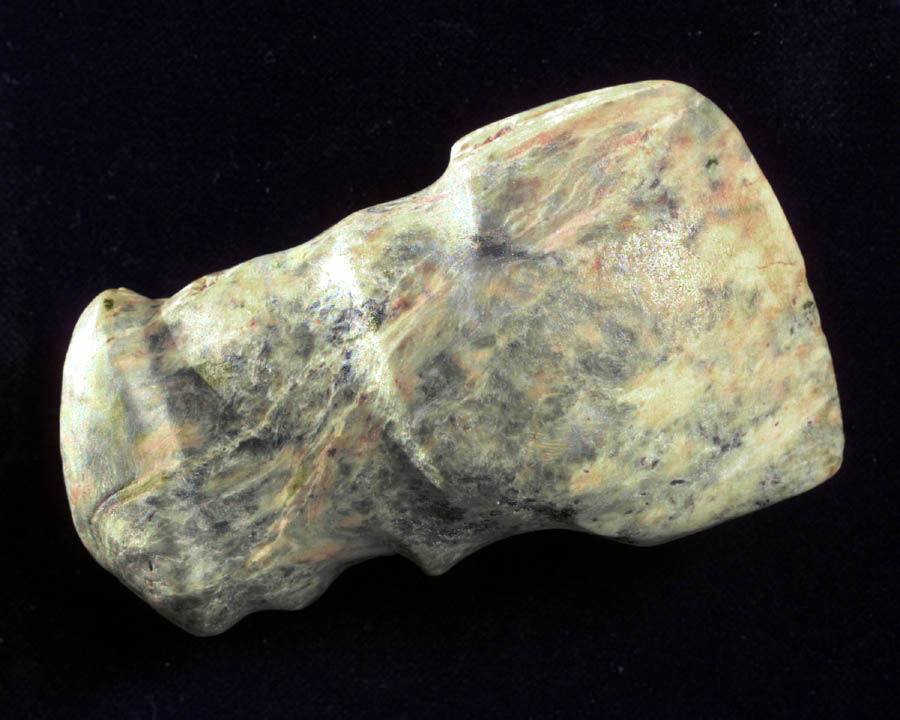
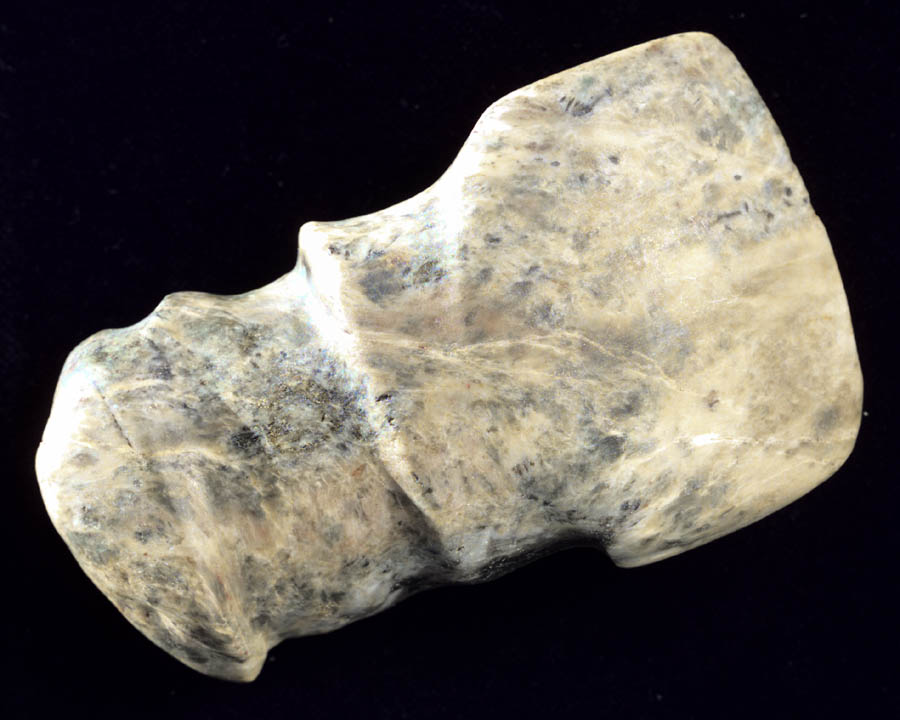
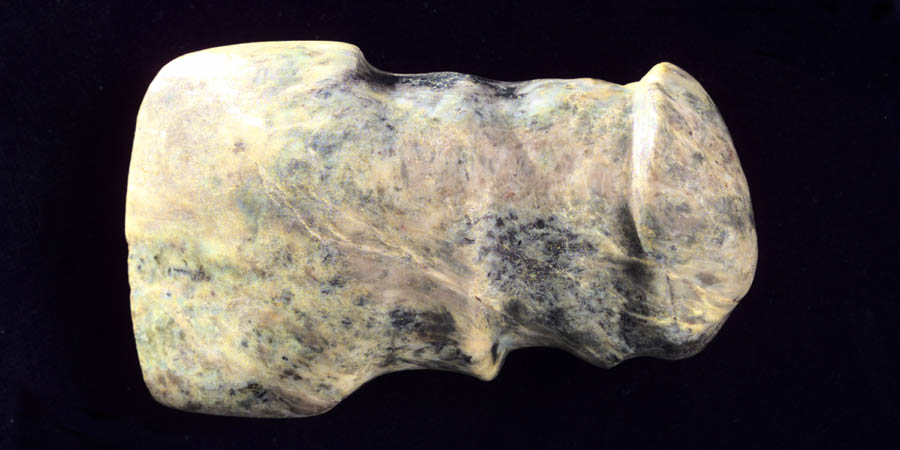
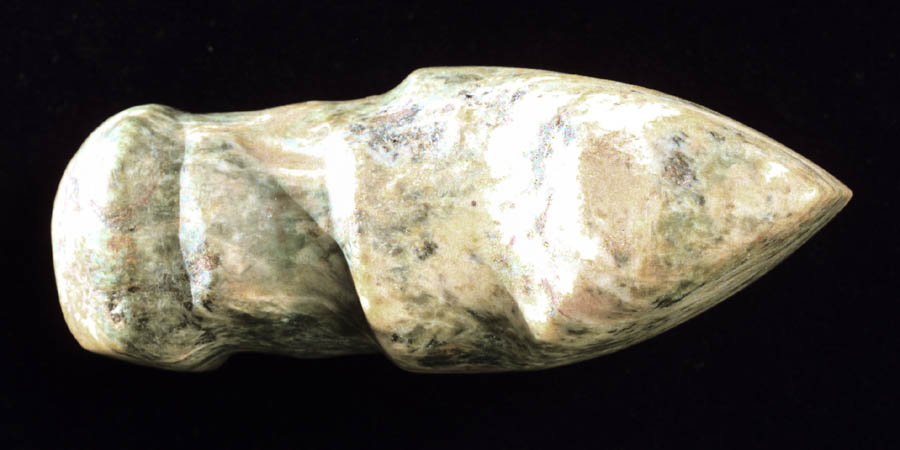
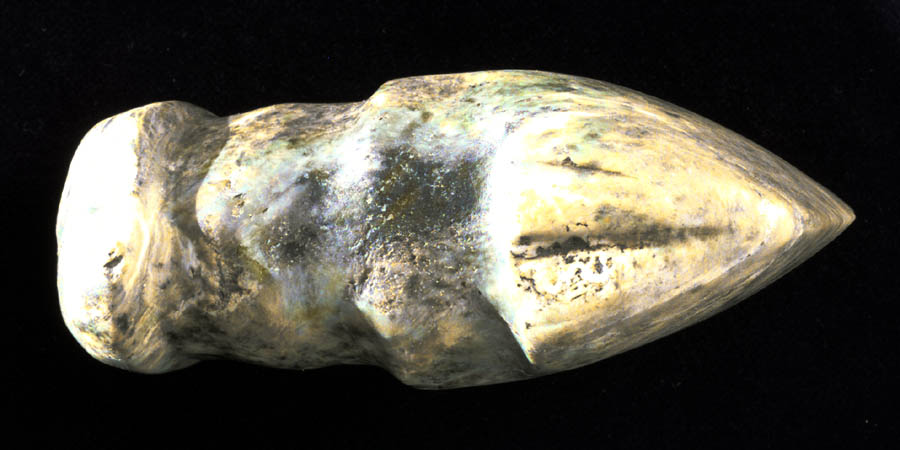
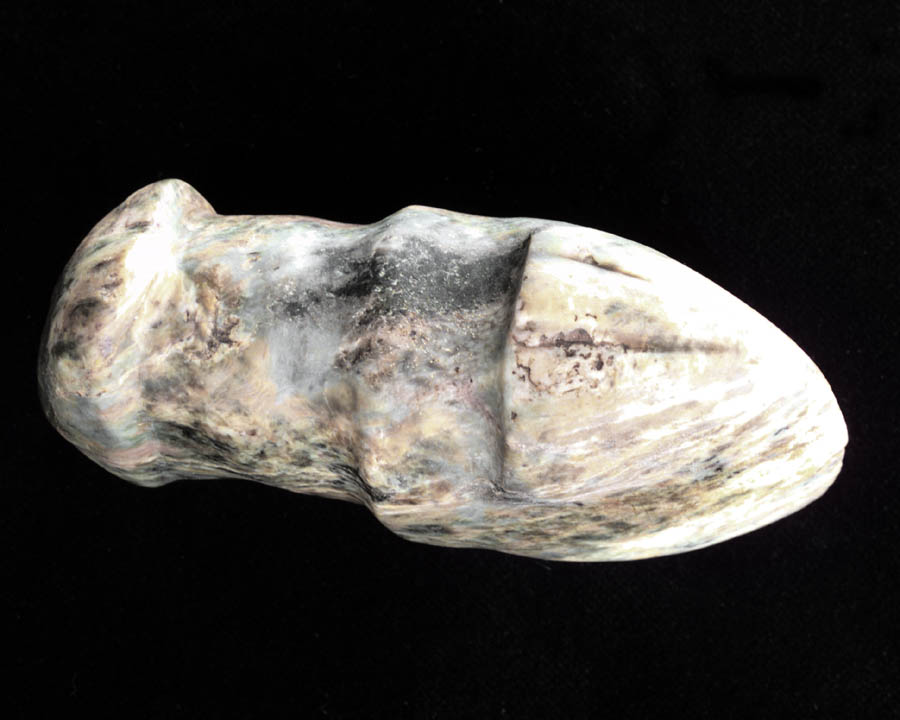
The following two images are of a small palm piece, made of the same fibrolite as the axe was. We believe this is part of a set for a fire bow and was used to hold the upper end of a stick that was twirled by the bow in order to heat the lower end of the stick and the piece of wood it was pivoting in, hot enough to start an ember for starting a fire. It is just the right size and shape to fit comfortably in the palm of your hand. The scratches were all put there by its maker.
Dimensions for the palm piece are:
Overall Height: 1 - 11/16 inch
Shortest Side: 1 - 1/4 inch
Midlength Side: 1 - 1/2 inch
Longest Side: 1 - 15/16 inch
Longest Perpendicular to Longest Side: 1 inch
Depth of Drilled Hole: 1/4 inch

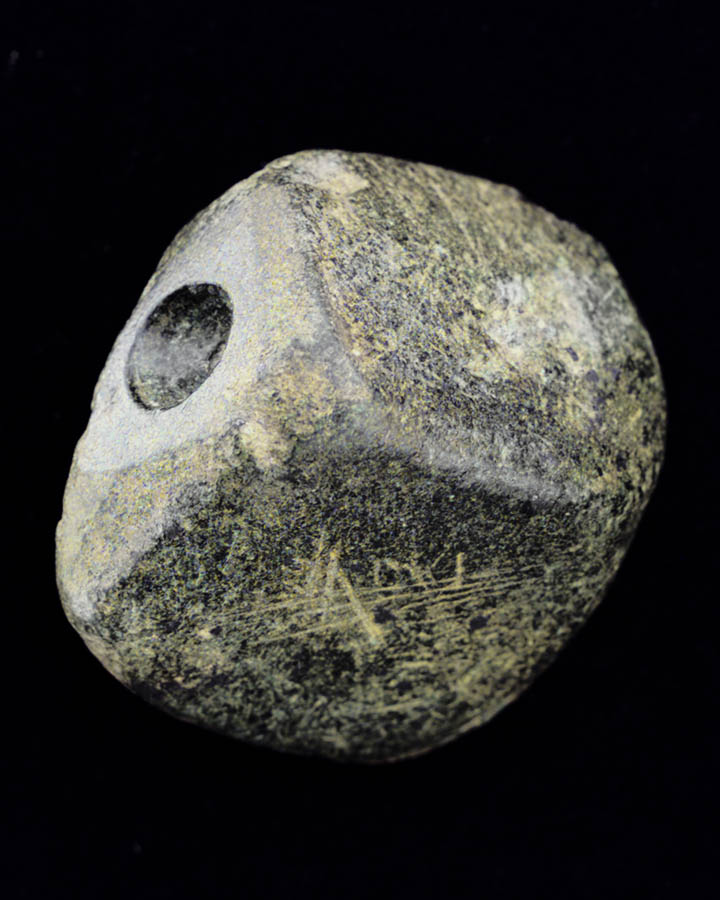
My brother, Michael and I have donated these two items to the Museum of Indian Arts & Culture in Santa Fe, New Mexico in the name of my parents and I believe that they can be seen on display there.
Copyright 2009 Rick McClain Photography
Salt Lake City, Utah
U.S.A.
(801) 484-8488
E-Mail:
l